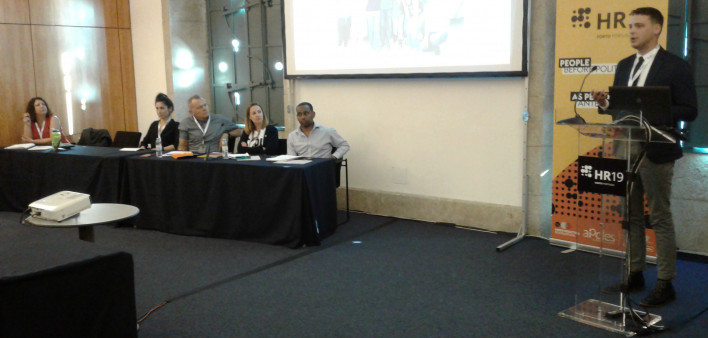In 2019, the United States is firmly in the throes of an opioid crisis that is increasingly being driven by injection drug use of substances like heroin and fentanyl that place those who inject drugs at high risk of overdose and of contracting infectious diseases like HIV and Hepatitis C (HCV). At the same time, there is a mountain of evidence that shows that syringe services programs (SSPs) are extremely effective at preventing HIV transmission while also reducing the spread of HCV and helping curb high risk drug use behaviors like needle sharing. SSPs can also serve a crucial role as a possible point of entry for people who use drugs to voluntarily seek treatment or to access healthcare services that they otherwise would not have been able or willing to seek out.
From an strictly analytical perspective, it would be natural to assume that the U.S. government would have responded to this opioid crisis by investing adequate resources in evidence-based public health interventions like SSPs that are best positioned to provide the best health outcomes for those negatively impacted by opioids and other injection drugs. Unfortunately, funding decisions for the health and wellbeing of people who use drugs are not made in an analytical vacuum governed by best practices, and the financial support for SSPs from federal, state, and local governments in the U.S. has been woeful.
This past Monday, representatives from AIDS United, Harm Reduction International, and the Elton John AIDS Foundation (EJAF), and several other harm reduction funders and advocates gathered at the 2019 International Harm Reduction Conference in Porto to discuss their own efforts to try and fill the vast gap between the need for harm reduction services in the United States and across the world, and the comparatively small amount of government funding currently available for that need.
The discussion, which was moderated by Mohamed Osman, Grants Director at EJAF, focused primarily on the profound need that exists around securing adequate funding for harm reduction services and ways in which private philanthropy can be leveraged to provide monies for such services in the absence of meaningful government funding. During his opening presentation, Osman affirmed EJAF’s commitment to serving as a philanthropic leader in the realm of harm reduction, outlining the organization’s latest plans for investment and development around the world that were specifically tailored to what EJAF views as significant areas of need within given regions. Tellingly, EJAF’s focus for the United States will be in the realm of harm reduction policy and advocacy, which has historically received very little in the way of government funding.
AIDS United presented on their Syringe Access Fund, a private funders’ collaborative for syringe access that was designed to bring visibility to SSPs and serve as a vehicle for increasing private investment in a political environment where support from federal, state, and local governments were either scant or nonexistent and where there were no more than a handful of dedicated private funders.
Since its creation in 2004, the Syringe Access Fund has $20 million in grant money to harm reduction organizations, with 85% of that money going directly to SSPs. Thanks to the collaborative nature of the Syringe Access Fund—with private donors pooling resources into one pot that is then managed and distributed by AIDS United—it is able to provide increased visibility to the needs of SSPs while also issuing larger and more frequent grants to applicants.
Unfortunately, the successes of the Syringe Access Fund can only be seen as the start of a larger and more arduous process of ensuring that SSPs and other harm reduction organizations receive the funding they so desperately need. By way of example, in 2017, the U.S. Department of Health and Human Services announced its 5-point Opioid Strategy that included $800 million in grants to support substance use treatment and recovery while providing no funding whatsoever for harm reduction strategies for people who actively use drugs and are not ready or qualified for treatment. To be sure, funding increases are absolutely needed for substance use treatment and recovery. However, given that The 2017 National Survey of Drug Use and Health found that only 14% of the 11.4 million Americans who reported opioid use in the past year met the diagnostic criteria for an opioid use disorder, it is unacceptable that the federal government would completely spurn harm reduction programs in such a strategy.
It is unfortunate that syringe services providers are forced to rely on private philanthropy for funding that the government should be providing, but until federal, state, and local officials come to their senses and begin prioritizing harm reduction services as the evidence-based avenue for ending the opioid epidemic that they are, it is what we must rely on. To find out more about AIDS United’s Syringe Access Fund and get access to a comprehensive list of syringe services resources and AIDS United’s report on bringing Safer Consumption Spaces to the U.S., click here.








Comments
Comments